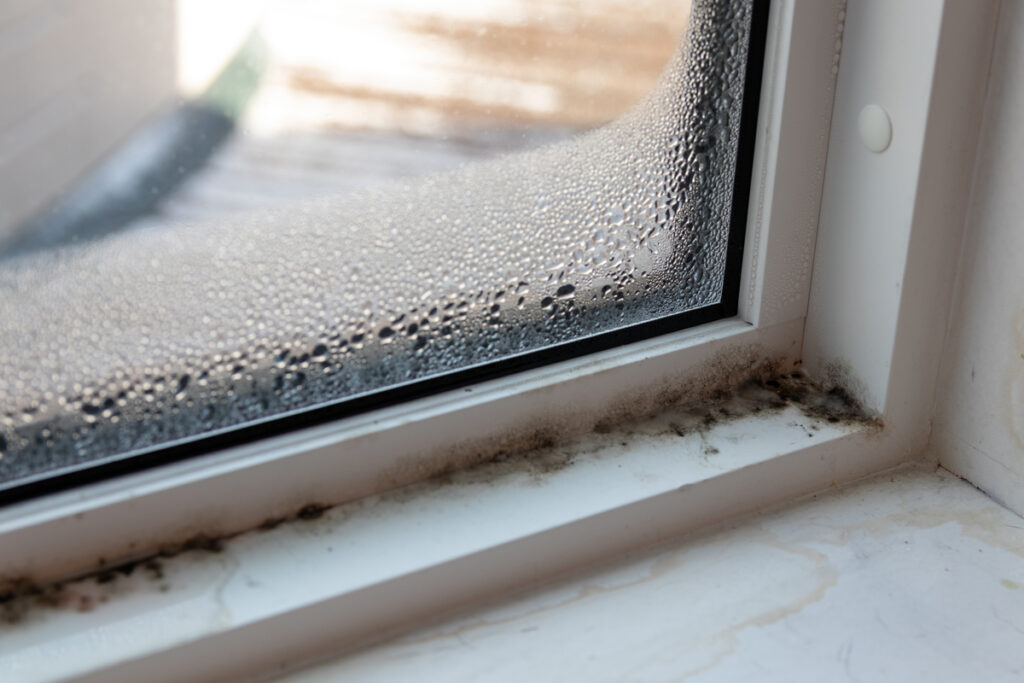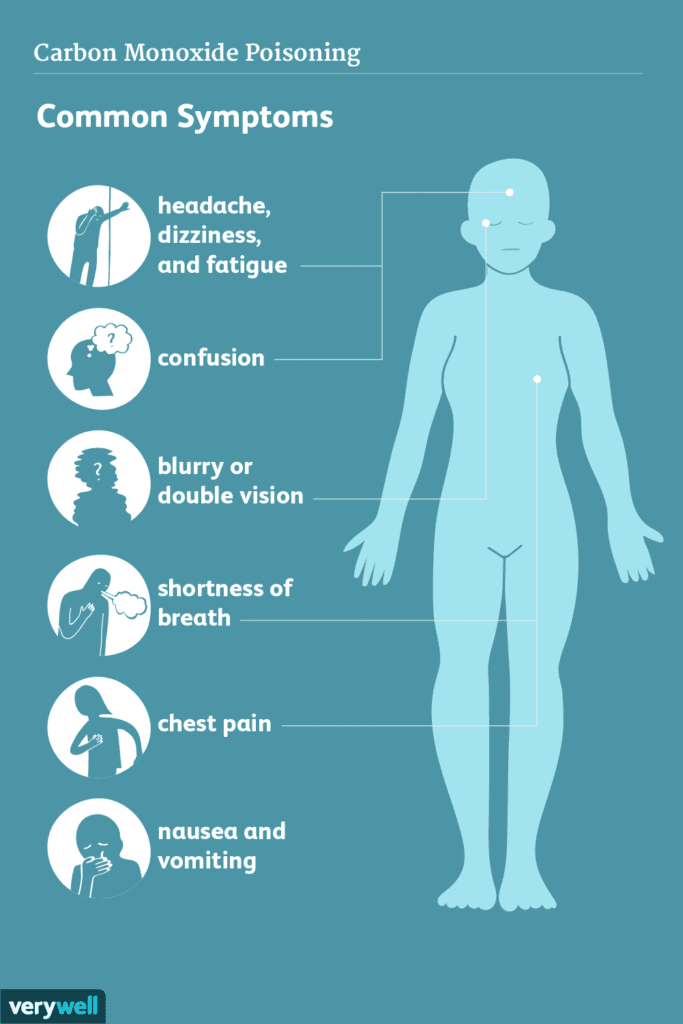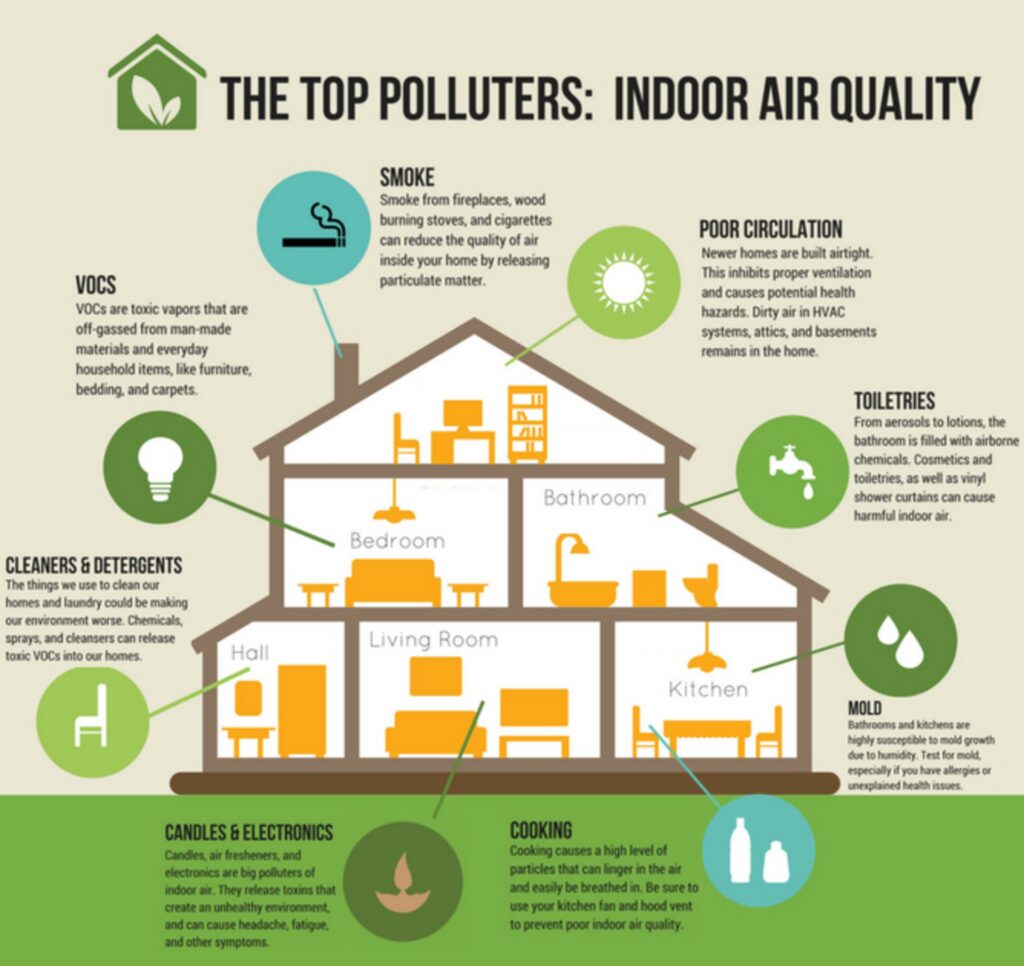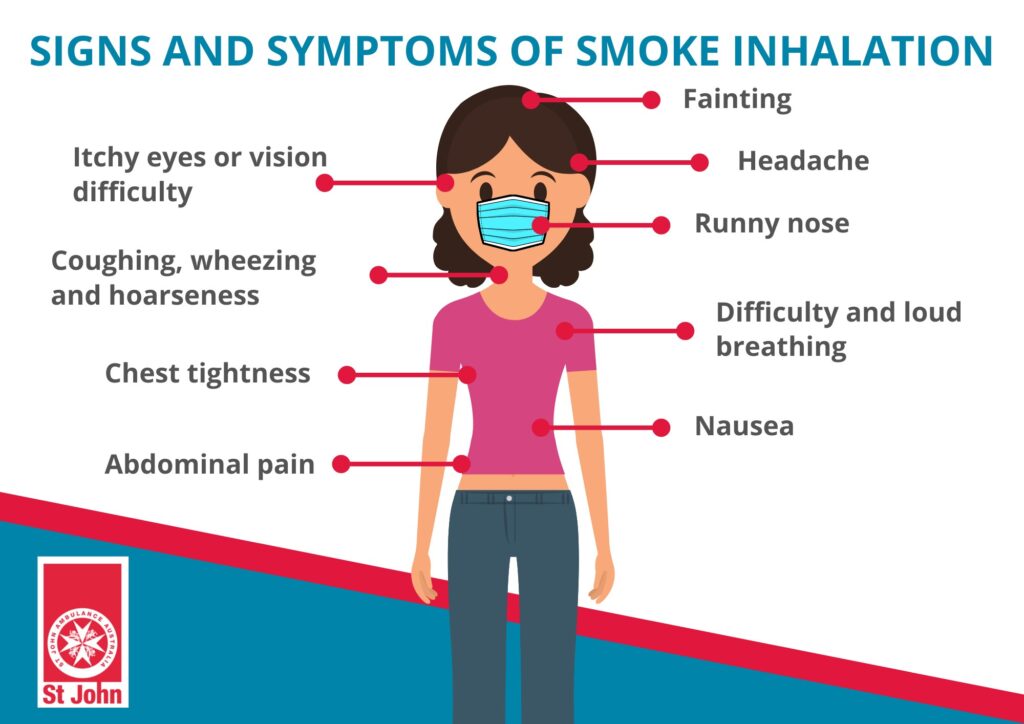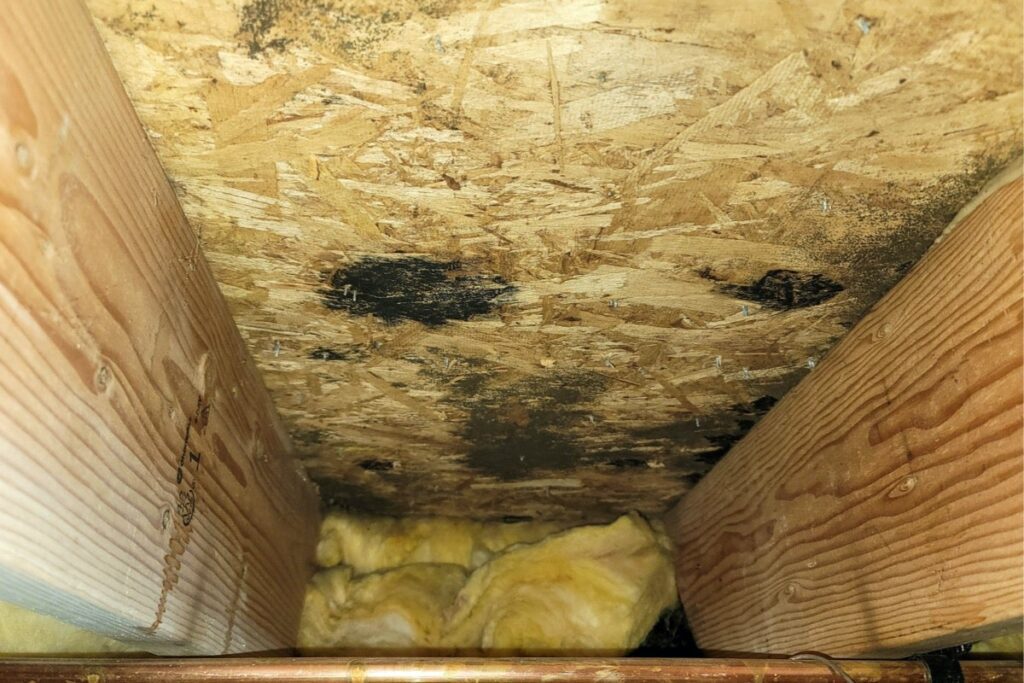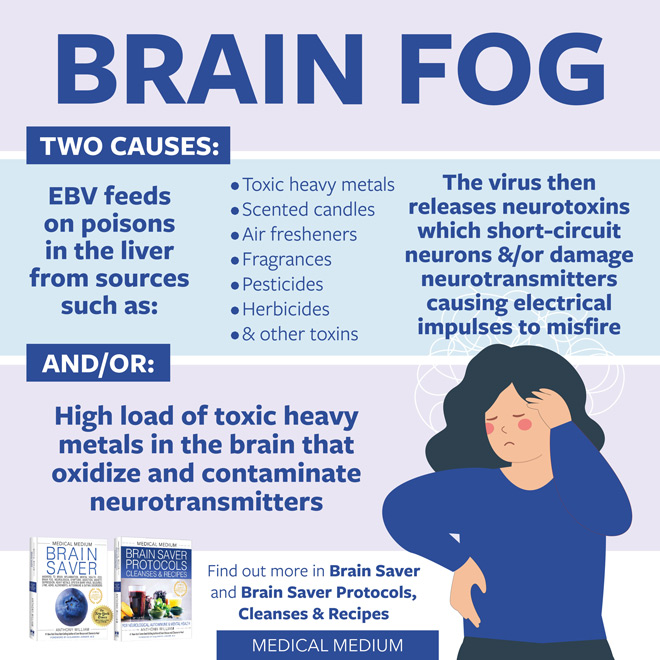Have you ever wondered why you feel more sick in your house? It’s a common concern for many individuals, especially those who spend a significant amount of time at home. The truth is, there could be a variety of triggers and factors contributing to this phenomenon.
It’s essential to investigate potential causes and take steps to create a healthy living environment. In this article, we will explore the reasons why you may feel more sick in your house, and provide actionable tips on improving indoor air quality, reducing allergens, and maintaining overall wellness at home.
Key Takeaways
- Feeling sick in your house is a common concern for many individuals.
- Potential triggers include poor indoor air quality, allergens, household toxins, mold, and dampness.
- Taking steps to improve ventilation, maintain hygiene, and reduce exposure to these triggers can help create a healthier home environment.
Causes of feeling sick at home
There are several potential causes of feeling sick at home. Your house may be exposing you to health issues that you are unaware of. Some possible factors to consider are:
- Allergic reactions to common household allergens such as dust, pet dander, or mold
- Indoor air pollution from household products and activities
- Sick Building Syndrome, which occurs when occupants experience acute health and comfort effects that appear to be linked to time spent in a building
- Household toxins and chemicals, which can cause serious health issues over time
- Mold and dampness, which can lead to respiratory issues and other health problems
It’s important to note that these factors may not be the sole cause of your sickness, but they can contribute to an overall unhealthy living environment. In the next sections, we’ll explore each of these causes in more detail and provide tips on how to address them.


Indoor Air Quality and Sickness
Did you know that the air in your home can have a significant impact on your health? Poor indoor air quality can lead to a variety of health issues, ranging from minor symptoms like headaches and fatigue to more serious conditions like respiratory problems and heart disease.
Indoor air quality can be impacted by a number of factors, including pollutants from household products and chemicals, as well as allergens like dust, pet dander, and mold. Poor ventilation and high humidity levels can also contribute to unhealthy indoor air quality.
| Common symptoms of poor indoor air quality include: |
|---|
| Headaches |
| Fatigue |
| Dizziness |
| Irritation of the eyes, nose, and throat |
| Coughing and sneezing |
If you are experiencing any of these symptoms, it may be worth investigating the air quality in your home. There are several steps you can take to improve indoor air quality and reduce the risk of sickness in your home environment.


One simple step you can take is to increase ventilation throughout your home. This can be done by opening windows and doors to allow fresh air to circulate, or by using a whole-house ventilation system to provide a continuous supply of fresh air. Additionally, using air purifiers with HEPA filters can help to remove pollutants and allergens from the air.
Another key factor in maintaining healthy indoor air quality is keeping a clean home environment. This includes regular dusting and vacuuming to remove allergens, as well as avoiding the use of harsh chemicals and fragrances that can contribute to poor air quality. You can also reduce humidity levels by using dehumidifiers and fixing any leaks or moisture issues that may be contributing to mold growth.
By making these simple changes and paying attention to the quality of the air in your home, you can reduce the risk of sickness and enjoy a healthier living environment.
Sick Building Syndrome: Why You May Feel Unwell in Your House
If you often feel unwell in your house, it may be due to a condition known as sick building syndrome. This syndrome is characterized by a range of symptoms that are associated with spending time indoors in a specific building.
Sick building syndrome can be caused by various factors, including poor ventilation, air pollution, and exposure to chemicals. The symptoms of sick building syndrome can range from mild to severe and may include headaches, dizziness, fatigue, and respiratory issues.
To identify whether your symptoms are the result of sick building syndrome, it’s important to assess the air quality in your home. This can be done through air quality testing, which can help to identify any pollutants or chemicals in the air that may be causing your symptoms.
If you suspect that you may be suffering from sick building syndrome, it’s important to take steps to improve the air quality in your home. This can be done by installing air purifiers or air filters, using natural cleaning products, and reducing the sources of indoor air pollution, such as smoking or using chemical cleaners.


In severe cases, it may be necessary to seek professional help to address the sources of indoor air pollution. This may involve consulting with an air quality specialist or building engineer to identify and address any structural issues or sources of pollution in your home.
By taking steps to improve the air quality in your home, you can reduce your risk of developing sick building syndrome and enjoy a healthier, more comfortable living environment.
Allergens in the House
Do you constantly feel unwell at home? It could be due to the presence of allergens in the house. Allergens are substances that cause allergic reactions, and they are found in many places within the home environment.
The most common allergens in the house include dust mites, pet dander, mold spores, and pollen. These allergens can trigger symptoms such as sneezing, coughing, wheezing, and itchy, watery eyes.
To reduce exposure to allergens, it is important to regularly clean and dust your home. Use a vacuum with a HEPA filter, and wash bedding and pillows frequently.
Consider investing in an air purifier with a HEPA filter to remove allergens from the air. Keep pets out of bedrooms and off furniture, and bathe them regularly. Fix any leaks or water damage in the house to prevent the growth of mold and mildew.
By taking these steps to reduce exposure to allergens in the house, you can alleviate symptoms and create a healthier living environment.
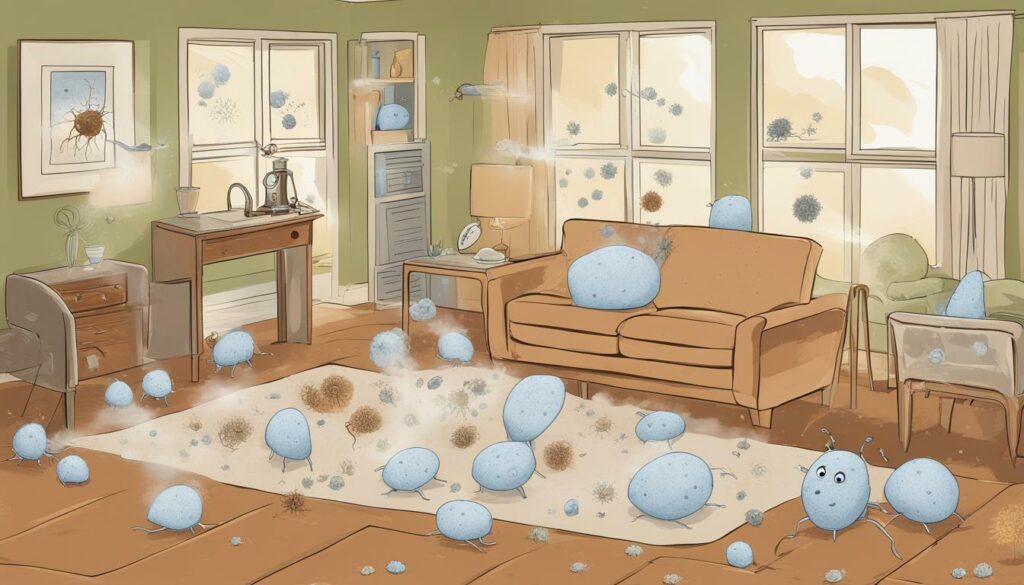

Household Toxins and Chemicals
If you’re feeling sick in your house, household toxins and chemicals may be contributing to your symptoms. Many common household cleaning products, building materials, and furniture can contain harmful chemicals that may affect your health over time.
Volatile organic compounds (VOCs), which are released from paint, cleaning products, and air fresheners, can irritate the eyes, nose, and throat, and may lead to headaches and dizziness. Flame retardants, which are often found in upholstered furniture and electronics, can also release harmful chemicals into the air.
Exposure to these chemicals can lead to health issues such as respiratory problems, neurological disorders, and cancer. To minimize your exposure to household toxins and chemicals, it’s important to choose natural and non-toxic products whenever possible.
Look for products labeled as non-toxic, biodegradable, and free from harsh chemicals. You can also make your own cleaning products using simple ingredients such as vinegar, baking soda, and lemon juice.
Air purifiers with HEPA filters can also help to remove harmful pollutants from the air, while plants such as snake plants and spider plants can naturally filter the air in your home.
By being aware of the potential risks associated with household toxins and chemicals, you can take steps to create a healthier living environment for you and your family.
| Harmful Chemicals | Common Sources |
|---|---|
| Volatile organic compounds (VOCs) | Paint, cleaning products, air fresheners |
| Flame retardants | Upholstered furniture, electronics |
| Formaldehyde | Pressed-wood products, insulation, carpets |
| Lead | Old paint, pottery, water pipes |


Mold and Dampness
If you have a musty smell in your house or see mold growing on surfaces, you may be experiencing the negative effects of mold and dampness. These issues can have serious health implications, including respiratory problems and allergic reactions.
Mold and dampness thrive in damp and humid environments, so it’s crucial to address any leaks or water damage immediately.
One way to prevent mold is to ensure proper ventilation in your home. Open windows or use fans to increase air circulation, especially in areas with high moisture levels such as bathrooms and kitchens. Additionally, using a dehumidifier can help to reduce excess moisture in the air.


When cleaning up mold, it’s important to wear protective gear such as gloves and a mask to avoid inhaling mold spores. Use a mixture of bleach and water to clean surfaces affected by mold, and allow the area to dry completely. If you have a large mold issue, it’s best to hire a professional to handle it safely and effectively.
By taking steps to prevent mold and addressing any dampness issues in your home, you can help to protect your health and create a safer living environment.
Ventilation and air circulation
Proper ventilation and air circulation play a critical role in maintaining a healthy home environment. Without adequate ventilation, indoor air quality can quickly deteriorate, leading to a variety of health issues.


Poor air quality can cause respiratory problems, headaches, fatigue, and other symptoms that can make you feel sick in your own home. Ensuring that your home has adequate ventilation and air circulation can help to mitigate these effects.
One way to improve ventilation is by opening windows and doors to allow fresh air to circulate throughout your home. You can also use exhaust fans in the kitchen and bathroom to remove excess moisture and prevent the buildup of harmful gases.
If you have a central air system, make sure to regularly replace the filters to ensure optimal air flow and reduce the presence of pollutants in the air. Additionally, consider adding air purifiers or air-cleaning plants to your home to further improve indoor air quality.
Cleaning and hygiene practices
Keeping your house clean and maintaining good hygiene practices can greatly impact your overall health and well-being. When we neglect to clean and disinfect our surroundings, we can become exposed to harmful bacteria and viruses that can make us feel unwell. By incorporating these simple cleaning and hygiene practices into your routine, you can create a safer and healthier home environment.
Disinfect frequently touched surfaces
Germs can easily spread on surfaces that are frequently touched, such as doorknobs, light switches, and countertops. Disinfecting these surfaces regularly with a household cleaner or disinfectant spray can help to kill any harmful bacteria and viruses that may be present.
Wash your hands
Our hands are constantly exposed to germs, which can spread to other surfaces and objects, and lead to illness if not properly washed. Be sure to wash your hands with soap and warm water for at least 20 seconds throughout the day, especially before and after eating, after using the bathroom, and after sneezing or coughing.
Keep food areas clean
When preparing and handling food, it’s important to maintain a clean and sanitary environment. This includes washing your hands before and after handling food, using separate cutting boards for raw meat and produce, and regularly cleaning kitchen surfaces and utensils.
Keep indoor plants clean
Indoor plants can be a beautiful addition to your home, but they can also collect dust and mold over time. Make sure to wipe down leaves regularly to prevent the buildup of dirt and potential health hazards.
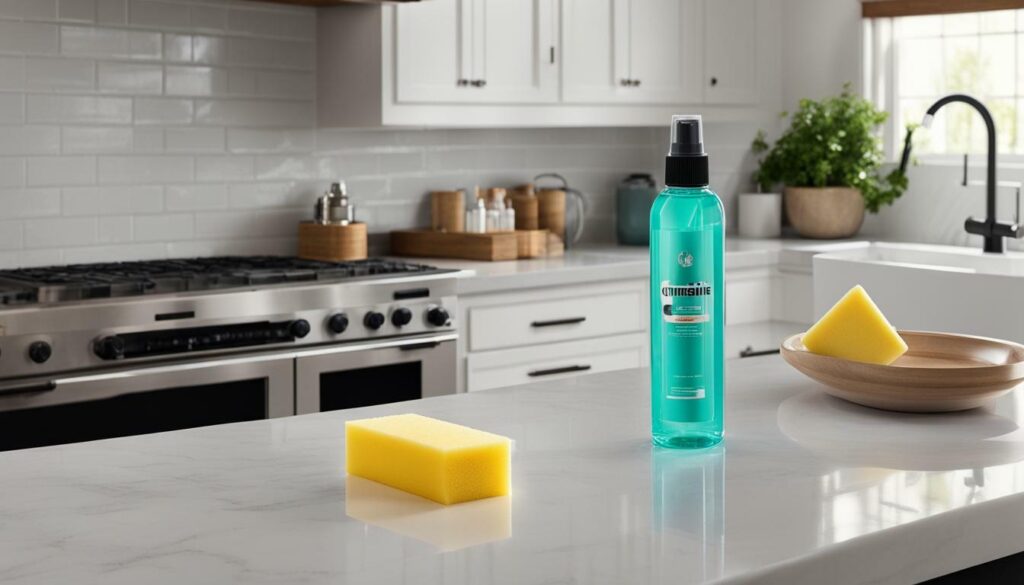

Air out your home
Proper ventilation is essential for maintaining good indoor air quality and reducing the spread of airborne illnesses. Open windows and doors when possible to allow fresh air to circulate throughout your home.
Use natural cleaning products
Traditional household cleaners can contain harmful chemicals that can negatively impact our health and the environment. Consider using natural cleaning products, such as vinegar and baking soda, to clean your home.
Don’t neglect your pets
Our furry friends can also contribute to a less-than-healthy home environment. Regularly clean and disinfect pet areas, such as litter boxes and food dishes, to prevent the spread of germs. And don’t forget to groom your pets regularly to remove any excess hair and dander that can accumulate on surfaces.
By following these cleaning and hygiene practices, you can help to create a healthier living environment and reduce your risk of feeling unwell at home.
Creating a Healthy Home Environment
If you’re feeling sick at home, it’s important to take steps to create a healthier living environment. Here are some practical ways to make your home more conducive to your health:
Improving Indoor Air Quality
Poor air quality can contribute to a variety of health issues, from respiratory problems to allergies. To improve the air quality in your home, consider:
- Investing in an air purifier with a HEPA filter to remove pollutants from the air.
- Opening windows to increase fresh air circulation.
- Regularly changing air filters in your heating and cooling systems.
- Maintaining a healthy level of humidity (30-50%) to prevent mold growth.


Reducing Allergens
Common allergens in the home include dust mites, pet dander, and mold. To reduce your exposure to these allergens, try:
- Vacuuming and dusting regularly to remove dust and pet hair.
- Washing bedding and soft furnishings in hot water to kill dust mites.
- Using a dehumidifier to prevent mold growth.
- Keeping pets out of certain areas of the house, such as the bedroom.
Maintaining Hygiene
Effective cleaning and hygiene practices can go a long way in keeping you healthy. Consider:
- Washing your hands frequently, especially during cold and flu season.
- Cleaning surfaces regularly with a disinfectant to prevent the spread of germs.
- Avoiding smoking indoors.
- Keeping the kitchen clean to prevent foodborne illnesses.
Improving Ventilation
Proper ventilation is key to maintaining a healthy home environment. Try:
- Opening windows whenever possible to increase fresh air circulation.
- Using exhaust fans in the kitchen and bathroom to remove moisture and odors.
- Having your heating and cooling systems checked regularly to ensure proper airflow.
By taking these steps to create a healthy home environment, you can reduce your risk of feeling sick at home and improve your overall well-being.
Conclusion
Congratulations on reaching the end of this article! We hope it has shed some light on the question of why you may feel more sick in your house. As we’ve discussed, there are various possible causes, ranging from poor indoor air quality and allergens to household toxins and dampness.
It’s important to take action to address any potential triggers and ensure a healthy living environment. This may include measures such as improving ventilation, reducing exposure to allergens, and maintaining good cleaning and hygiene practices.
Remember, your home should be a place of comfort and wellness. By taking steps to create a healthy home environment, you can ensure that you feel your best while at home.
Thank you for reading this article. We wish you all the best in your efforts to maintain a happy and healthy home.
FAQ
Q: Why do I feel more sick in my house?
A: There can be several reasons why you might feel more sick in your house. Factors such as poor indoor air quality, allergens, household toxins, and mold can contribute to these feelings. It is important to identify and address these issues to create a healthier living environment.
Q: What are the causes of feeling sick at home?
A: Feeling sick at home can be caused by various factors, including poor indoor air quality, allergens in the house, household toxins, dampness, and mold. Identifying and addressing these causes can help improve your overall health and well-being.
Q: How does indoor air quality affect sickness?
A: Indoor air quality plays a significant role in our health. Poor air quality can lead to respiratory issues, allergies, and other health problems. Improving indoor air quality through proper ventilation and filtration systems can help reduce sickness and improve overall well-being.
Q: What is sick building syndrome?
A: Sick building syndrome refers to a condition where occupants of a building experience various symptoms such as headaches, fatigue, and respiratory issues. This condition is often linked to poor indoor air quality, inadequate ventilation, and the presence of allergens or toxins in the building.
Q: What are common allergens in the house?
A: Common allergens in the house include dust mites, pet dander, pollen, mold spores, and certain household chemicals. These allergens can trigger allergic reactions and contribute to feelings of sickness. Reducing exposure to these allergens can help alleviate symptoms.
Q: What are the potential health risks associated with household toxins and chemicals?
A: Household toxins and chemicals can pose various health risks, including respiratory issues, skin irritation, and even long-term health effects. Common sources of these substances can be found in cleaning products, building materials, and certain household items. Minimizing exposure to these toxins is important for maintaining a healthy home environment.
Q: How does mold and dampness affect our health?
A: Mold and dampness in the house can contribute to respiratory issues, allergies, and other health problems. Exposure to mold spores can cause allergic reactions and worsen existing respiratory conditions. Proper identification and remediation of mold issues are crucial for a healthy living environment.
Q: Why is ventilation and air circulation important for a healthy home?
A: Proper ventilation and air circulation are essential for maintaining a healthy home. Effective ventilation helps remove indoor pollutants, control humidity levels, and provide fresh air exchange. This can reduce the risk of respiratory issues and improve overall indoor air quality.
Q: How do cleaning and hygiene practices affect our health at home?
A: Cleaning and hygiene practices play a significant role in maintaining a healthy home environment. Regular cleaning helps remove allergens, dust, and other pollutants, reducing the risk of respiratory issues and allergies. Proper hygiene, such as handwashing, also helps prevent the spread of germs and illnesses.
Q: What are some practical steps to create a healthy home environment?
A: To create a healthy home environment, consider improving indoor air quality through proper ventilation and air filtration systems. Reduce allergens by regularly cleaning and dusting, and minimize exposure to household toxins. Address any mold or dampness issues promptly, and maintain good hygiene practices throughout your home.


